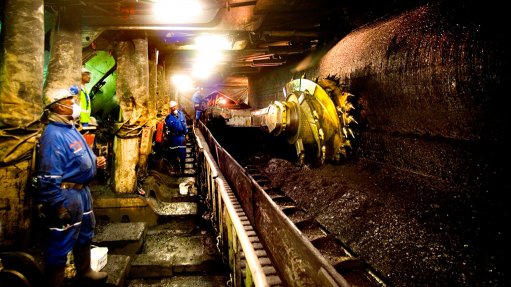
PROSPECTIVE INVESTMENT Denham Capital Management believes the outlook for copper and zinc prospects in South America is positive
In addition to focusing on copper mining investment opportunities in Africa, energy-focused global private-equity firm Denham Capital Management is investing in new copper projects in South America this year, company director Caroline Donally tells Mining Weekly.
As a growth-equity firm, Denham Capital invests in the early stages of mining projects and assists in developing them to a certain point, such as production readiness, before the projects are sold to larger mining investment companies for further development.
“We are quite bullish about copper in Africa and South America and, in the long term, we believe prospects are good for base metals in both continents,” she says.
Denham’s South American portfolio includes copper exploration projects that could potentially develop into significant copper projects, which Donally estimates will require more than $300-million in capital investment.
While she notes that the grades of copper generally tend to be higher in the smaller-scale African projects than in the larger-scale projects in South America, she says mining is more feasible in South America, as the continent has more enhanced infrastructure.
“Infrastructure aids investment in the projects, as assets of a far larger scale than normal can be built, which means better economies of scale are obtained to mine lower-grade material than the material that would be mined across Africa.”
While Denham Capital acquires an in-depth understanding of South American and African projects’ investment viability, Donally highlights sufficient infrastructure as a key aspect when assessing project feasibility.
Despite many of Denham Capital’s projects being in the exploration phase, its desire to be assured that there is sufficient infrastructure, should assets be brought into production, is a key consideration, she says.
“Our involvement in exploration projects depends on whether we can proceed with a fair degree of certainty that the infrastructure is being built over the longer term and will come into fruition for future projects,” she adds.
Africa Prospects
Denham Capital has been financing several African projects since 2011, including gold, tin, manganese or copper projects in the Democratic Republic of Congo (DRC).
Further, the company has invested in a team currently involved in early-stage copper exploration projects in countries other than traditional mining countries like the DRC and Zambia. Donally says the team is assessing opportunities in North Africa.
“We believe there are good opportunities across Africa for additional copper producers, as this is a commodity which will always be in demand,” she says, adding that copper assets will be in demand for at least the next five years.
Although Donally cannot disclose an investment figure for Denham Capital’s Africa-based projects, she adds that an estimated budget, which includes base metals and copper assets, is in the range of $200-million.
In addition to the copper projects in South America in which the company is currently involved, Denham Capital is also actively pursuing and developing zinc and lead opportunities on the continent. The South American portfolio currently comprises seven projects, ranging from early-stage exploration projects to small-scale projects, with production of the latter under way.
Meanwhile, the closures and projected closures in the next few years of several zinc mines, including the Century zinc mine, in Australia, owned by mining company MMG; the GlencoreXstrata-owned Brunswick zinc mine, in Canada; and the Lisheen zinc mine, in Ireland, owned by mining company Vedanta Resources; compounded by China’s growing demand for zinc, have piqued investor interest in this particular base metal, Donally notes.
“It is well known in the markets that zinc supply is expected to decrease over the next few years, which bodes well for the price and future demand of zinc,” she concludes.